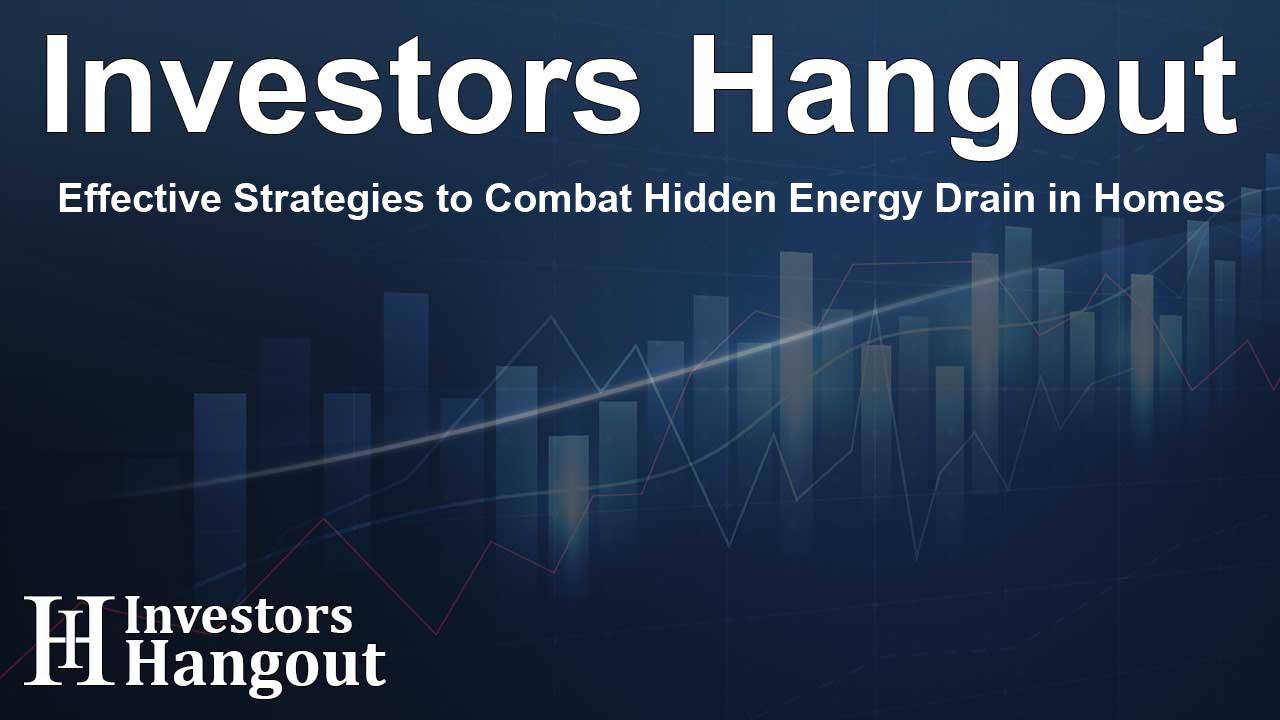Effective Strategies to Combat Hidden Energy Drain in Homes

Don't Let Phantom Power Increase Your Energy Costs
Save Energy and Money by Tackling Hidden Energy Drains
Energy consumption can be deceptive, especially with devices that draw power even when they appear to be off. These 'energy vampires' silently increase monthly electricity bills, contributing both to higher costs and environmental concerns. Understanding and managing these phantom loads is vital for smart energy use.
Pacific Gas and Electric Company (PG&E) provides resources to help customers identify these energy-draining devices that operate continuously, even on standby.
Understanding Phantom Power
According to estimates, devices consuming standby power can lead to up to 10% of a typical home's electricity expenses. This issue has a global carbon footprint, accounting for approximately 1% of total emissions. Homeowners may unwittingly pay around $100 annually just for these plugged-in devices. Fortunately, with minor adjustments in energy use habits, substantial savings can be realized.
David Poster, PG&E Director of Building Electrification and Efficiency, emphasizes that eliminating energy vampires doesn’t require significant investment. Simply adjusting daily habits can lead to lower monthly bills, promoting a sustainable lifestyle.
Common Energy-Hungry Devices
To effectively combat phantom power, it's crucial to identify the prevalent offenders. The following items, as indicated by the Standby Power Project, are notorious for draining power:
- Desktop computers
- Computer monitors
- Smart speakers and home automation devices
- Phone and tablet chargers
- Gaming consoles
- Modems and internet routers
- Televisions
- Cable boxes
- Coffee makers
- Printers
- Toasters
Adopting Energy-Saving Habits
Taking an active stance on reducing energy waste can diminish standby power consumption by approximately 20%, according to industry insights. Here are several proactive strategies:
- Unplug electronics when not in use to maximize savings.
- Implement smart power strips, allowing users to power down multiple devices at once with one switch.
- Always turn off lights when exiting a room.
- Invest in Energy Star certified appliances, which consume less energy.
- Utilize PG&E's no-cost online tools like the Home Energy Checkup and Energy Action Guide to enhance energy efficiency.
- Enroll in HomeIntel, a free PG&E service that provides a personal energy coach and insights tailored for Smart Meter users.
Additional Tools for Energy Monitoring
Homeowners can also engage more directly in energy management through devices that monitor energy usage:
- The Kill A Watt Meter helps track precise electricity usage of connected appliances.
- The Plug Load Logger captures detailed power consumption insights.
Devices are conveniently available for borrowing from the PG&E Energy Centers Tool Lending Library, or they can be purchased at local retailers to allow for effective monitoring of energy consumption at home.
Investing in Energy Efficiency
Building an energy-efficient home environment can lead to significant savings. Customers are encouraged to explore PG&E’s Energy Efficiency DIY Toolkit, which equips individuals with resources for affordable energy-saving upgrades.
Energy Efficiency Support Programs
PG&E offers several programs aimed at assisting customers in improving energy efficiency:
- The Energy Savings Assistance (ESA) program provides free upgrades for income-eligible participants.
- GoGreen Financing offers accessible funding options for energy improvements, enhancing efficiency for both homeowners and renters.
Exploring More Ways to Save
Through the HomeIntel initiative, users can discover practical methods for energy reduction. Multimedia resources, like instructional videos featuring personal energy coaches, help raise awareness about effective practices.
Finding additional energy-saving strategies tailored for colder months can be explored on PG&E’s website, empowering customers to maintain economical energy usage year-round.
About Pacific Gas and Electric Company
Pacific Gas and Electric Company, a subsidiary of PG&E Corporation (NYSE: PCG), serves a vast region in Northern and Central California. Catering to over sixteen million residents across an extensive service area, PG&E focuses on providing reliable and sustainable energy solutions. For more information, you can visit pge.com and pge.com/news.
Frequently Asked Questions
What is phantom power?
Phantom power refers to the energy drawn by appliances and devices while they are switched off or in standby mode.
How much can I save by reducing phantom load?
Households can potentially save around $100 each year by minimizing phantom power consumption.
What are some examples of energy-hungry devices?
Devices like desktop computers, smart speakers, and gaming consoles typically drain significant amounts of energy.
How can I reduce energy waste effectively?
Strategies include unplugging unused devices, using smart power strips, and investing in energy-efficient appliances.
Where can I find resources for energy efficiency?
PG&E offers tools such as the Home Energy Checkup and Energy Action Guide online for households aiming to improve energy efficiency.
About The Author
Contact Kelly Martin privately here. Or send an email with ATTN: Kelly Martin as the subject to contact@investorshangout.com.
About Investors Hangout
Investors Hangout is a leading online stock forum for financial discussion and learning, offering a wide range of free tools and resources. It draws in traders of all levels, who exchange market knowledge, investigate trading tactics, and keep an eye on industry developments in real time. Featuring financial articles, stock message boards, quotes, charts, company profiles, and live news updates. Through cooperative learning and a wealth of informational resources, it helps users from novices creating their first portfolios to experts honing their techniques. Join Investors Hangout today: https://investorshangout.com/
The content of this article is based on factual, publicly available information and does not represent legal, financial, or investment advice. Investors Hangout does not offer financial advice, and the author is not a licensed financial advisor. Consult a qualified advisor before making any financial or investment decisions based on this article. This article should not be considered advice to purchase, sell, or hold any securities or other investments. If any of the material provided here is inaccurate, please contact us for corrections.
